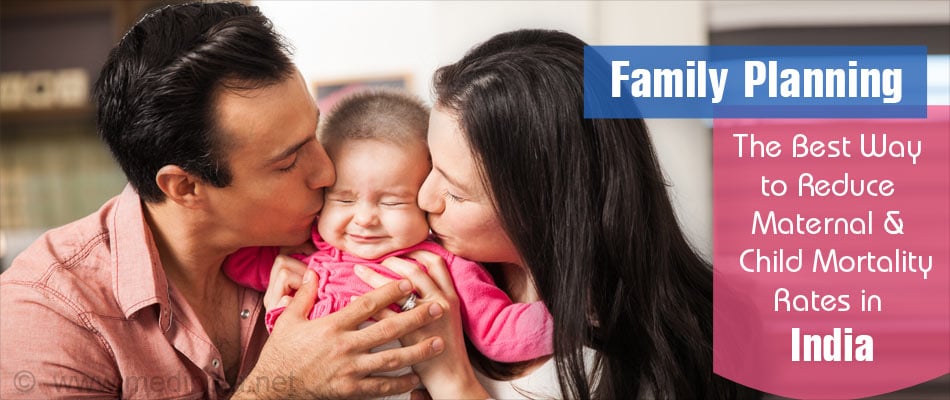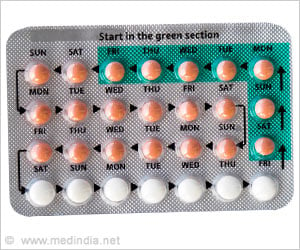
- Family Planning emerges as the mission to reduce maternal and child mortality & morbidity in India.
- The public health system will act as a key in putting an end to all preventable maternal and child deaths.
- The benefits of family planning go beyond a woman’s health by taking her well-being and prosperity into account. It is also essential for the country’s economic development.
Statistical Emphasis:
- Since 45% of the India’s maternal deaths occur in the age group between 15 and 25, with 47% of the total fertility group clustered, the country is moving from limiting to delaying births and increasing spacing between births for better health benefits.
- Maternal mortality in the country has been reduced by 65% from the year 1990 to 2011-13 (while the global achievement being 47%).
- A sharp decline in decadal growth rate from 21.54% in 1990-2000 to 17.64 % in 2001-2011.
- The total fertility rate has also decreased from 6 in 1951 to 2.3 in 2013 and 24 Indian states/union territories have achieved 2.1 or lesser replacement level fertility.
- Expanding Postpartum IUCD services have been the forefront and almost 1.4 million insertions have been done.
At the two-day National Summit held on 5th April, 2016 in New Delhi, The Union Minister of Health and Family Welfare, Shri J P Nadda has stated that family planning could be the key strategy to reduce maternal and child mortalities and morbidities in the country. The dignitaries present during the conference include Shri B P Sharma , Secretary (HFW), Shri C K Mishra, AS& MD, Dr. Rakesh Kumar, JS (RCH, IEC) and other senior officers of the ministry and representatives of development partners.
Highlights of the Event:
- The Union Health Minister Shri J P Nadda Launched:
- A newly revamped logo for family planning media awareness campaign in addition to the 360-degree communication plan for enhanced awareness regarding family planning issues.
- A new packaging of contraceptive Nirodh was introduced intending to increase its use.
- The Techno-Managerial Guidelines for injectable contraceptives in addition to a mobile app for mission Indradhanush.
- Shri Amitabh Bachchan was declared as the new Brand Ambassador and anchor for the new approach.
- Different Indian states received awards for their contribution towards efforts taken for family planning in the country. Tamil Nadu was awarded for its Exemplary Contribution in Post-partum Sterilization, Madhya Pradesh for its Contribution in PPIUCD, Bihar and Himachal Pradesh for their Contribution on Female Sterilization and Male Sterilization respectively.
The Health Minister has announced a change in the approach of family planning to be the key strategy for reducing child and maternal mortality rates. The new approach is a comprehensive strategy that has been worked out to place maternal and child health at the center point. Family planning will become a key development imperative, reinforcing the rights of people to determine the number and spacing of children.
Women Empowerment: When women have the freedom to determine the timing of their pregnancies, their position in the society strengthens. It not only reduces child mortality, but also improves maternal health since there are risks associated with pregnancies that happen in quick successions.
- The promotion of family planning and ensuring access to preferred methods for couples to secure the health and status of women.
- Family planning to be taken as the initial step on a long path towards achieving equality, growth and development. While small size families can be healthier as well as wealthier than the larger ones, empowering women can serve as the key to growing economies and healthy open societies.
- The quality of family planning services via advocacy with states to become the focus and NHM will give support to ensure quality and improved monitoring of the program.
- Increasing access to family planning services might effect in transformation on everything from poverty reduction to climate change. It has been utilized as a platform that focuses on improving access to family planning services by providing fixed day static services, quality improvisations of the services, influencing the demand for contraceptives with more choices.
In collaboration with Civil Society Organizations and the private sector, the country is committed to providing every client (including 200 million couples in reproductive age group) throughout the country with family planning information, services and commodities free of cost.
There comes a broader choice basket of contraceptive choices- Injectables, POPs and Centchroman for women offered by the public health system under national family planning program. This kind of improved access to contraceptives will be addressing all the dimensions of development. The health ministry will be working closely via the private sector engagement with social marketing and franchising approaches that will ensure that everyone receives the interventions.
ASHA (Accredited Social Health Activists):
- ASHA has been instrumental in counseling couples for delaying the birth of the first child by a minimum of 2 years and maintaining, at least, three years gap between the first and the second child.
- 0.9 Million ASHAs have been delivering contraceptives (Oral contraceptive pills, emergency contraceptive pills and condoms) at the doorsteps of people in villages.
- http://pib.nic.in/newsite/PrintRelease.aspx?relid=138580









